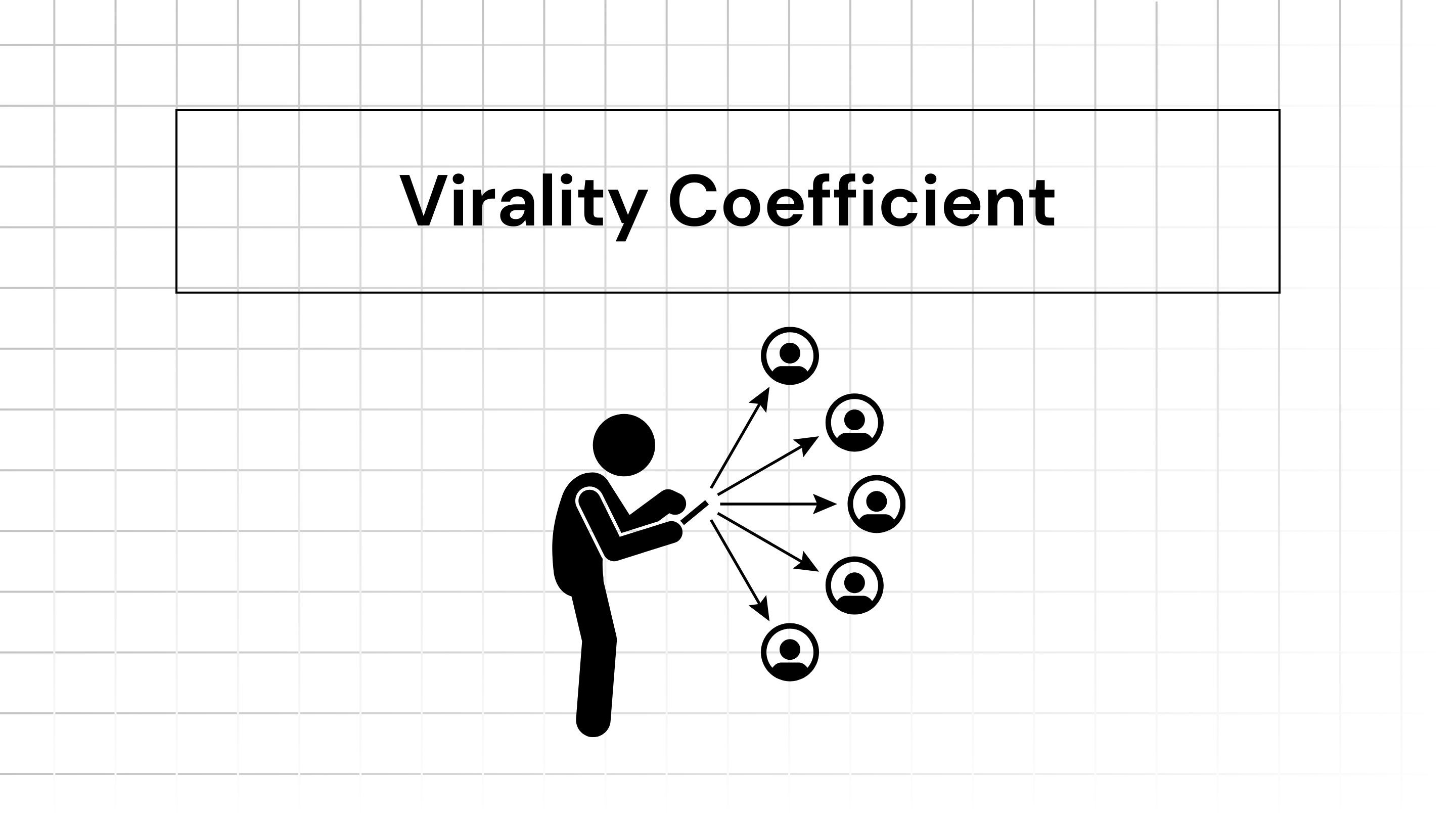
Iterate AI
Jan 8, 2025
What is Virality Coefficient?
The virality coefficient or Viral Coefficient is a measure of how quickly an app can grow through user referrals. Essentially, it tells you how many new users each existing user brings into the app. It's a key indicator of organic growth, how happy your existing customers are and how strong your word-of-mouth game is.
The formula is as follows:
Viral Coefficient = (Number of Invitations Sent) * (Conversion Rate of Invitations)
Number of Invitations Sent is the number of invites a single user sends to their network, encouraging them to join the app.
Conversion Rate of Invitations represents the percentage of invites that convert into new users.
For example, if each user invites 5 friends, and 20% of those friends sign up for the app, the viral coefficient would be 1.0. This means that for every user, the app gains one additional user, suggesting that the app has the potential to grow.
Why is the Viral Coefficient Important for Product Apps?
Growth at scale: The viral coefficient is an important growth hack. If your app has a viral coefficient greater than 1, it can experience viral growth, where each user helps bring in more users. As this cycle continues, your app can reach more people with minimal marketing effort.
Cost efficiency: Organic marketing is mainly based on content and SEO and it can get expensive. But with a viral coefficient greater than 1, your app markets itself through its users via word of mouth and referrals becoming a powerful growth engine.
Sustained growth: A high viral coefficient is a sign of sustained, organic growth that can help an app outlive trends and compete in crowded markets. Even in a competitive space, apps that effectively harness the power of virality can maintain strong user bases over time.
How to Improve Your App's Viral Coefficient
You only talk good about a product when it is actually good. Here are a few strategies you follow to trigger your happy customers to get new users. None of these strategies work when your current customer is not happy holistically.
Referral Programs: A solid referral program is one of the most direct ways to leverage virality. By incentivizing users to refer friends (through rewards or exclusive access), you can boost the number of invitations sent and increase your conversion rate. Dropbox used a referral program offering additional storage space for both the referrer and the invitee and it helped them grow from 100,000 to 4 million users in just 15 months.
Sharing Features: Integrate social sharing options directly within the app so users can quickly send invites to their networks. The logic is simple. The less effort, the more likely they are to do it.
Offer Value Early On: If your app provides immediate value to users (e.g., a compelling feature, exclusive content, or a high-quality user experience), they’ll be more likely to share it with others. Ensure users see the app’s benefits quickly to encourage them to refer others. Airbnb used its viral coefficient to expand rapidly. By encouraging hosts to share listings and providing early users with incentives to invite others, Airbnb created a viral loop that brought in millions of new users.
User Experience & Retention: A great user experience goes hand in hand with virality. If users love your app, they’ll want to share it. A seamless interface, quick load times, and intuitive design all contribute to higher satisfaction and, by extension, higher referral rates.
Leverage Social Proof: Testimonials, user success stories, and ratings can encourage others to try out your app. When potential users see others benefiting from it, they’re more likely to trust and join in, increasing the likelihood of conversion from invitations.
The Ideal Virality Coefficient: What to Aim For?
For exponential growth, the viral coefficient needs to be greater than 1.0. Here’s what different viral coefficients mean in practical terms:
Less than 1.0: If your app has a viral coefficient under 1.0, your user base will eventually plateau, as each user brings in fewer new users than they were acquired by.
Equal to 1.0: A viral coefficient of 1.0 means your app's growth is steady but not accelerating exponentially. You’ll need additional marketing efforts or other strategies to further increase the growth rate.
Greater than 1.0: This is where the magic happens. With a viral coefficient above 1, each user brings in more users than they were acquired by, causing your app to grow exponentially.
Is the Viral Coefficient a Reliable Metric?
Virality coefficient is not something you focus on singularly because word of mouth and referral are subjective. Sometimes even your happiest customers won’t share. Here are other limitations:
Short-Term Focus: A viral coefficient of 1 or above may look promising initially, but it doesn’t always guarantee long-term success. A sudden spike in users may not be sustainable if your app doesn’t retain those users or continue engaging them effectively.
Quality of Referrals: Not all users who are brought in by referrals will necessarily convert into active, loyal users. If your app has a high viral coefficient but low user engagement, the metric might be misleading.
Viral Loops Can Burn Out: Virality can only last as long as the incentive to refer is appealing or useful. As soon as the novelty wears off, referral rates can drop, leading to a decline in the viral coefficient.
It is better to look at the virality coefficient with other growth-related product metrics such as Customer Acquisition Cost (CAC), Lifetime Value (LTV), User Retention Rate, Engagement Metrics, Referral Conversion Rate, Churn Rate, etc.
